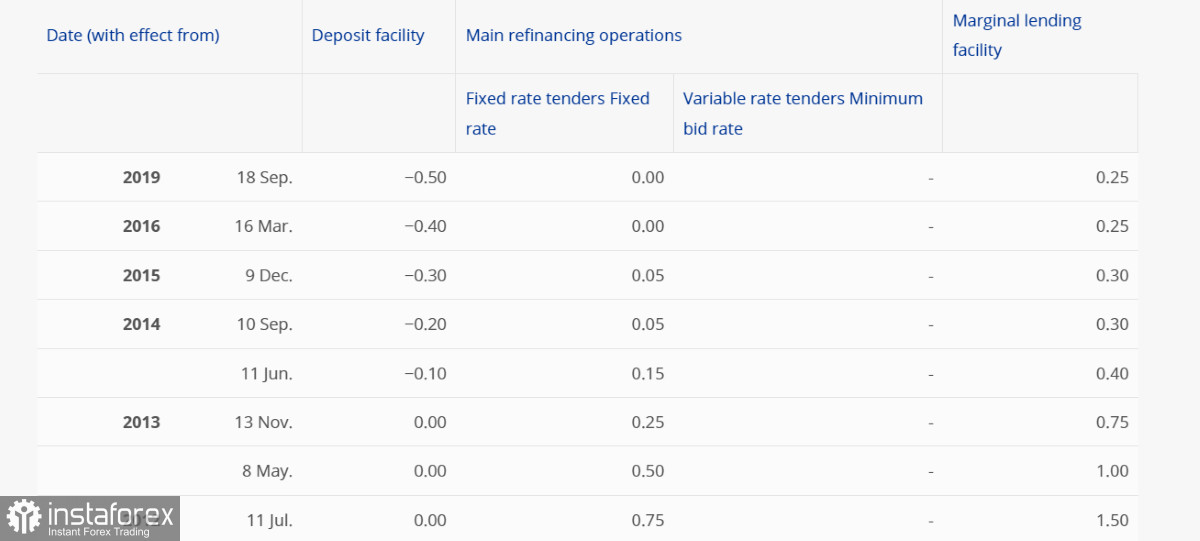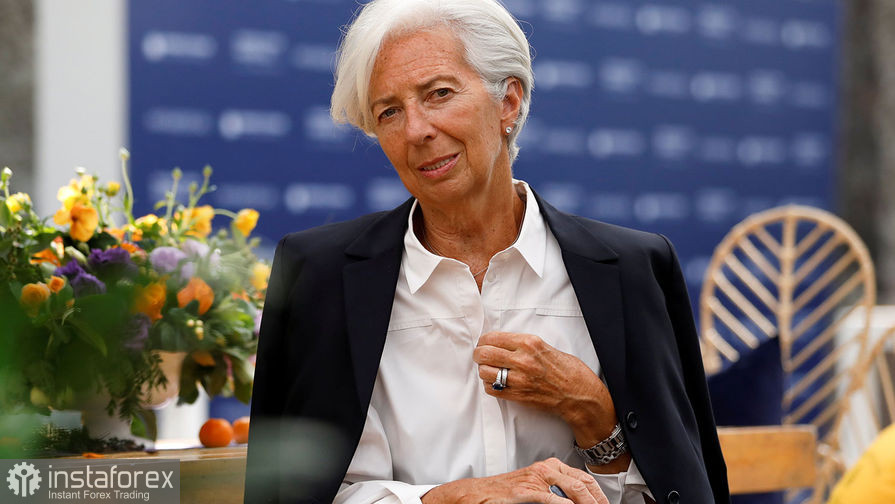Rate hike signals from the European Central Bank are becoming increasingly difficult to read, making it harder for investors to decide when the regulator will tighten monetary policy amid ongoing global geopolitical tensions and excessively high inflation.
The ECB's decisions today will depend in part on the so-called underlying price trends that policymakers are monitoring. We are talking about core inflation, which does not take into account food and energy prices. However, the consequences of logistical difficulties due to sanctions and the rapid rise in oil and gas prices can lead to a complete distortion of the picture and clarity of how to proceed and what to do. Don't be surprised if European Central Bank President Christine Lagarde again comes up with a number of rather hawkish statements, as she did quite recently, even before the aggravation of relations between Russia and Ukraine.

In my other review, I touched on a recent speech by Chief Economist Philip Lane, who noted that current data may be too unreliable to rely on them to guide future monetary policy. It seemed that the ECB was ready to curtail economic support measures and move away from stimulus programs and bond purchases, but the geopolitical situation and EU sanctions against Russia confused all the cards. Along with the threat to economic growth, the chances of interest rate hikes in 2022 have sharply declined, but inflation is immediately coming to the fore with a post mark of 6.0%, which is three times the European Central Bank's official target of 2%.
Inflation that includes food and energy prices—unlike wage-driven inflation—drastically reduces the purchasing power of the population, as most of the spending is spent on housing, utilities, basic necessities, food and gasoline, and then the expenses are directed to something else. High prices for these groups sharply reduce demand and slow down the economy. The same will happen with the eurozone.
Economists are optimistic, saying that growth in the eurozone will slow by 0.3-0.4 percentage points this year. And while ECB officials promise to act on the data coming in, they also say a gradual stimulus cut remains the most appropriate plan. The latest forecasts, which will be published after the end of today's ECB meeting, are likely to take into account a steady increase in prices in line with the official target of 2%.
Notably, core inflation hit a record 2.7% in February this year as businesses continued to raise prices at the fastest pace in a decade, adjusted for supply chain disruptions and the pandemic. The ECB's preferred measure of inflation expectations hit 2.4% on Tuesday.

In a recent interview, Executive Board member Isabel Schnabel highlighted the broad nature of inflation, which extends well beyond energy prices, but expressed concerns about the risks of reacting too late to price changes.
The head of the Finnish central bank thinks a little differently. In his opinion, geopolitical tensions delay, but do not negate the desire of the ECB to abandon the program of large-scale asset purchases. Austrian colleague Robert Holtzmann also recently said in an interview that the central bank is moving towards normalization, although expected ECB policy changes may be delayed until later. Mario Centeno of Portugal also supports the new policy direction, but warns of possible stagflation.
ECB policymakers also insist that asset purchases must stop before interest rates rise. Bond purchases under the Pandemic Emergency Purchase Program are expected to close this month. Economists expect that in June the ECB will also announce the termination of the regular program of buying bonds, which will end in September, and then rates will be raised towards the end of the year.
Expectations that the ECB will actually act more aggressively today are reflected in the euro quotes. Prices too attractive to buy have done their job.
As for the technical picture of the EURUSD pair
The euro reacts with growth to the expected data on inflation in the United States and the actions of the ECB, and traders are rapidly taking profits in one asset, switching their attention to riskier ones. Although the euro bulls have returned to resistance around 1.1100, which keeps the demand for the trading instrument, however, geopolitical tensions around Russia and Ukraine will limit the upward potential of the pair. Euro buyers need to consolidate above 1.1140, which will allow the correction to continue to the highs: 1.1230 and 1.1310. The decline of the trading instrument will be met with active purchases in the area of 1.1000. However, the key support level remains the 1.0880 area.
As for the technical picture of the GBPUSD pair
The buyers of the pound showed themselves after the recent major fall of the pair, and are now focused on the resistance of 1.3194. The return to control of this range will allow us to count on a more powerful correction of the pair in the area of 1.3240 and 1.3320. However, the prospects for growth are overshadowed by Russia's military operation on the territory of Ukraine. If we go below 1.3140, then the pressure on the trading instrument will increase. In this case, we can expect a repeated fall to 1.3085 and the exit of the trading instrument to new lows: 1.3030 and 1.2920.
 Tiếng Việt
Tiếng Việt 
 Русский
Русский English
English Bahasa Indonesia
Bahasa Indonesia Bahasa Malay
Bahasa Malay ไทย
ไทย Español
Español Deutsch
Deutsch Български
Български Français
Français 中文
中文 বাংলা
বাংলা हिन्दी
हिन्दी Čeština
Čeština Українська
Українська Română
Română

